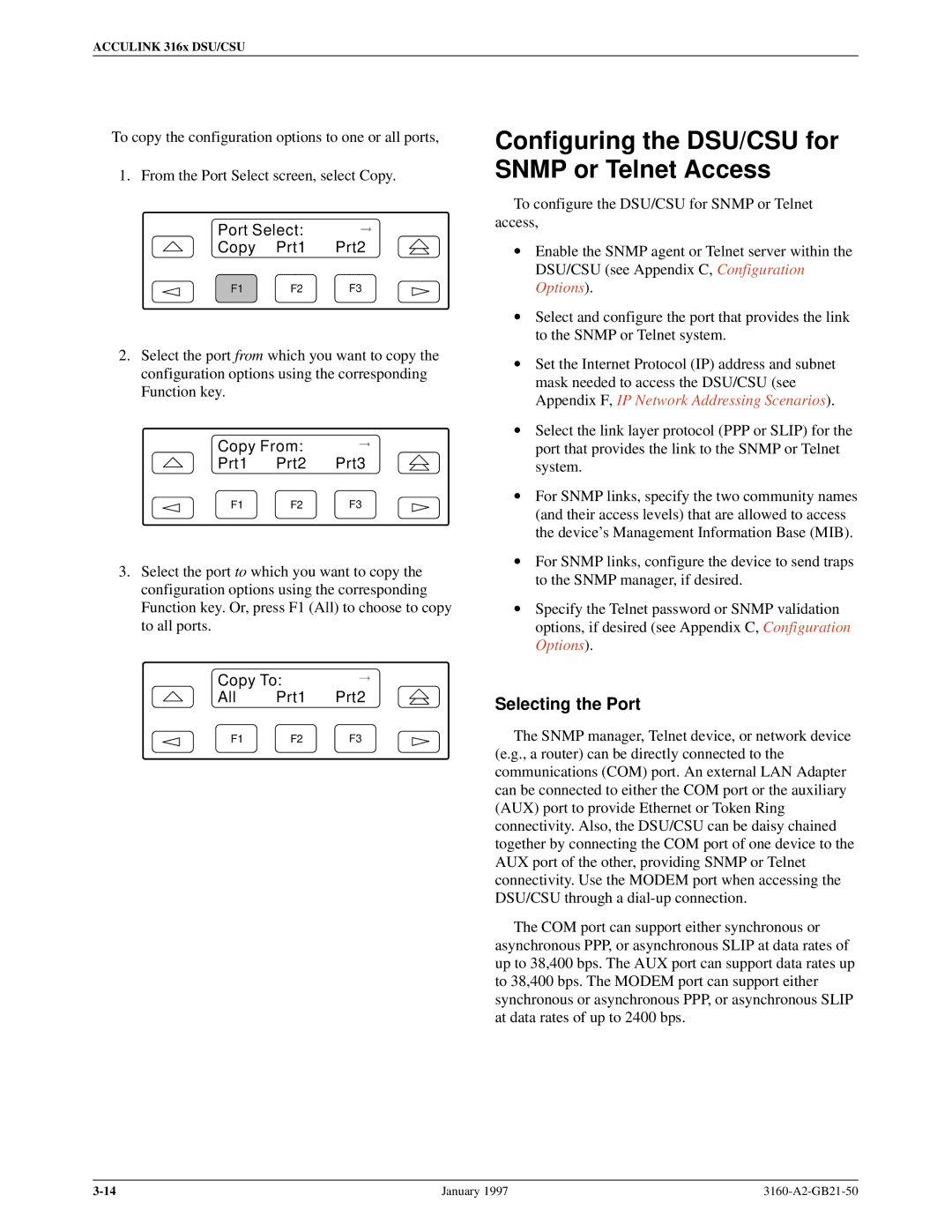
ACCULINK 316x DSU/CSU
To copy the configuration options to one or all ports,
1. From the Port Select screen, select Copy.
Port Select:
Copy Prt1 Prt2
F1 F2 F3
2.Select the port from which you want to copy the configuration options using the corresponding Function key.
Copy From:
Prt1 Prt2 Prt3
F1 F2 F3
3.Select the port to which you want to copy the configuration options using the corresponding Function key. Or, press F1 (All) to choose to copy to all ports.
Copy To:
All Prt1 Prt2
F1 F2 F3
Configuring the DSU/CSU for SNMP or Telnet Access
To configure the DSU/CSU for SNMP or Telnet access,
•Enable the SNMP agent or Telnet server within the DSU/CSU (see Appendix C, Configuration Options).
•Select and configure the port that provides the link to the SNMP or Telnet system.
•Set the Internet Protocol (IP) address and subnet mask needed to access the DSU/CSU (see Appendix F, IP Network Addressing Scenarios).
•Select the link layer protocol (PPP or SLIP) for the port that provides the link to the SNMP or Telnet system.
•For SNMP links, specify the two community names (and their access levels) that are allowed to access the device's Management Information Base (MIB).
•For SNMP links, configure the device to send traps to the SNMP manager, if desired.
•Specify the Telnet password or SNMP validation options, if desired (see Appendix C, Configuration Options).
Selecting the Port
The SNMP manager, Telnet device, or network device (e.g., a router) can be directly connected to the communications (COM) port. An external LAN Adapter can be connected to either the COM port or the auxiliary (AUX) port to provide Ethernet or Token Ring connectivity. Also, the DSU/CSU can be daisy chained together by connecting the COM port of one device to the AUX port of the other, providing SNMP or Telnet connectivity. Use the MODEM port when accessing the DSU/CSU through a
The COM port can support either synchronous or asynchronous PPP, or asynchronous SLIP at data rates of up to 38,400 bps. The AUX port can support data rates up to 38,400 bps. The MODEM port can support either synchronous or asynchronous PPP, or asynchronous SLIP at data rates of up to 2400 bps.
January 1997 |
